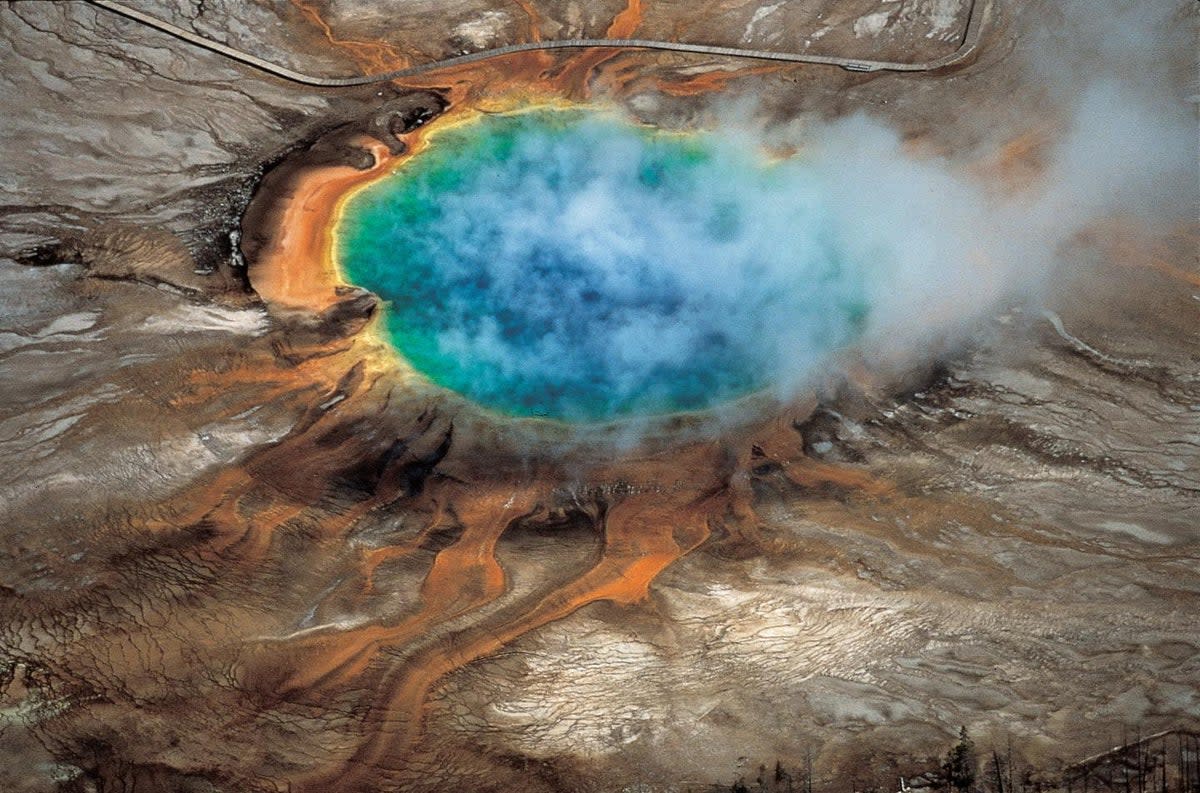Yellowstone supervolcano has much more magma than previously thought, study finds

The Yellowstone supervolcano in the Western US contains substantially more magma than scientists previously thought, according to a new study that may lead to a better assessment of the volcano’s hazards.
Researchers, including those from the University of Illinois in the US, however, caution that the findings do not imply an eruption is imminent or that it necessarily means the volcano is more hazardous than before.
The study, published last week in the journal Science, may help improve how scientists model this supervolcano to better predict its associated hazards.
“This is about getting a clearer image of what is down there and what has been down there for a while,” Brandon Schmandt, an author of the study from the University of New Mexico, told The New York Times.
The supervolcano, also called the Yellowstone caldera is located in Wyoming’s Yellowstone National Park and was created following a powerful eruption in the region that occurred about 630,000 years ago.
It is a huge bowl about 50 -70km wide, the eruption of which could choke the planet’s atmosphere with ash and block out the Sun for months.
A key criterion in the hazard assessment of volcanic eruptions is determining how much magma is below its surface and how it is distributed.
While the modern Yellowstone supervolcano remains active, scientists said questions remain on the volume and distribution of its magma and how these compare with the conditions which preceded the volcano’s previous eruptions in history.
Some previous studies have produced images of the subsurface below Yellowstone, helping make this estimate.
However, these reveal a reservoir in the mid to upper crust characterised by a relatively poor system of magma.
MSU researcher Min Chen's creativity and skill brought seismic wave imaging methods into sharper focus, revealing more information on the amount of molten magma under Yellowstone’s volcano. @EESMSU @CMSE_at_MSU @msuresearch https://t.co/WgK48FTtUW
— MSU College of Natural Science (@MSUNatSci) December 2, 2022
Based on recent observations from spatially isolated seismometers in the region, the new study suggests the supervolcano may contain substantial melt – more than scientists had previously thought.
While previous studies suggested the Yellowstone caldera had a low concentration of magma, of about only 10 per cent, the latest research indicates there could be upto twice that amount within the supervolcano’s magmatic system.
In the new study, new images of the liquid part of magma beneath the Yellowstone volcano were presented, revealing more melt than had been previously recognised in its shallow depths.
“Although our results indicate that Yellowstone’s magma reservoir contains substantial melt at depths that fueled prior eruptions, our study does not confirm the presence of an eruptible body or imply a future eruption,” scientists wrote in the study.
“The uncertainty about how melts are distributed means that more melt is not necessarily more hazardous,” Kari M Cooper, a geologist from the University of California Davis in the US, noted in the same journal in a related article.
While the findings also do not suggest that an eruption is more likely than previously thought, scientists call for continued monitoring of the supervolcano’s subsurface as it is likely to provide a clear picture if the situation dramatically changes.

